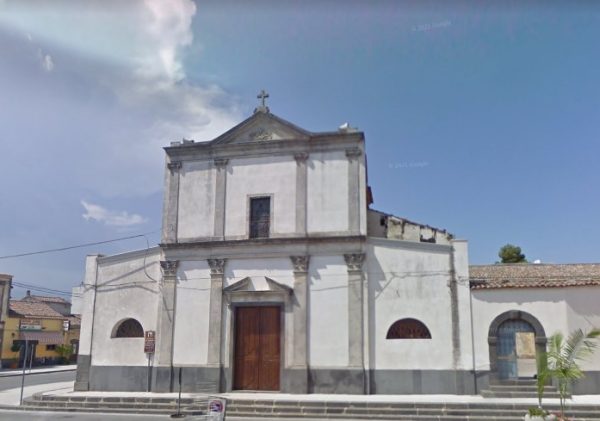Church of the Immaculate Convent and Capuchin Convent
The Church of the Immaculate Conception, with the adjoining Convent of the Capuchin fathers, stands on the Capuchin plain. The factory began in the first half of the seventeenth century. It has two naves; the smaller one, on the left, was built in the last century. At the side altars there are statues and paintings of the eighteenth and nineteenth centuries: among the first the wooden Immaculate Conception of the eighteenth century, San Francesco d'Assisi, the Heart of Jesus; among the latter the Souls of Purgatory, the Stigmata of San Francesco, the Pietà, Madonna with Franciscan Saints: both by unknown authors.
At the main altar is an altarpiece from 1659 with the Immaculate Conception and Saints by Frate Umile of Messina; on the sides of the altarpiece there are two other paintings, Sant'Antonio and Santa Chiara, attributed to Bernardino Niger (1708th century). The main altar, in walnut inlaid with floral motifs, is by Frate Mariano da Francavilla, a nineteenth-century carver. On the altar is the custody (10-XNUMX) Pietro Bencivinni da Polizzi.
Carved in cypress, orange and walnut wood, the Custody is one of the most distinguished works of art preserved in the churches of Linguaglossa. Of monumental proportions and sumptuous in the complex architecture of its parts, it is all a very imaginative embroidery of ornamental motifs ranging from the figures of animals to those of angels, from shells to hipprogriffs, to flowers, which decorate the twisted columns of the apses. The numerous scenes taken from the sacred texts (Moses and the bronze serpent, Cain and Abel, Adam and Eve, The Supper of Emmaus) and the saints placed in the niches or on the shelves supported by caryatids, not only testify to the refined technique of the carver, but they are also the most genuine expression of a feeling that knows how to reveal itself in the forms of an art that goes beyond the usual popular schemes.
Unfortunately, in the last decade some statuettes inside the case have been removed by unknown thieves.
The similar cases in Piazza Armerina, Palagonia, Mazzarino, Militello, etc .., however celebrated, do not stand up to the comparison of the precious Linguaglossa model. In the rooms of the Convent there are numerous paintings including a Virgin, a Madonna and Child (XVIII century) ascribed to Vito D'Anna, a second Madonna and Child (XVI century) attributed to Andrea da Salerno, a San Gaetano (1834 ) by Lucio Grasso and an unknown Santa Margherita.
(Text source: https://comune.linguaglossa.ct.it/)
Card insertion: Ignazio Caloggero
Photo: Google
Information contributions: Ignazio Caloggero / Web
Note: The populating of the files of the Heritage database proceeds in incremental phases: cataloging, georeferencing, insertion of information and images. The cultural property in question has been cataloged, georeferenced and the first information entered. In order to enrich the information content, further contributions are welcome, if you wish you can contribute through our area "Your Contributions"



